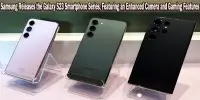The increased use of high-speed wireless communication devices, such as 5G mobile phones and sensors for self-driving cars, is causing airwaves to become increasingly congested. This makes the ability to prevent interfering signals that can impair device performance an even more critical — and difficult — issue.
With these and other potential uses in mind, MIT researchers showed a new millimeter-wave multiple-input-multiple-output (MIMO) wireless receiver architecture capable of handling greater spatial interference than earlier designs. MIMO systems contain numerous antennas, which allow them to transmit and receive signals from many directions. Their wireless receiver detects and blocks spatial interference at the earliest possible time, before undesirable signals are magnified, hence improving performance.
This MIMO receiver architecture relies on a specific circuit called as a nonreciprocal phase shifter, which may target and cancel out undesirable signals. The researchers demonstrate how a unique phase shifter structure, which is programmable, low-power, and compact, may be utilized to cancel out interference earlier in the receiver chain.
Their receiver can block up to four times more interference than comparable products. In addition, the interference-blocking components can be turned on and off as needed to save energy.
There is already a lot of utilization happening in the frequency ranges we are trying to use for new 5G and 6G systems. So, anything new we are trying to add should already have these interference-mitigation systems installed.
Negar Reiskarimian
In a mobile phone, such a receiver could help mitigate signal quality issues that can lead to slow and choppy Zoom calling or video streaming.
“There is already a lot of utilization happening in the frequency ranges we are trying to use for new 5G and 6G systems. So, anything new we are trying to add should already have these interference-mitigation systems installed. Here, we’ve shown that using a nonreciprocal phase shifter in this new architecture gives us better performance. This is quite significant, especially since we are using the same integrated platform as everyone else,” says Negar Reiskarimian, the X-Window Consortium Career Development Assistant Professor in the Department of Electrical Engineering and Computer Science (EECS), a member of the Microsystems Technology Laboratories and Research Laboratory of Electronics (RLE), and the senior author of a paper on this receiver.
Reiskarimian wrote the paper with EECS graduate students Shahabeddin Mohin, who is the lead author, Soroush Araei, and Mohammad Barzgari, an RLE postdoc. The work was recently presented at the IEEE Radio Frequency Circuits Symposium and received the Best Student Paper Award.

Blocking interference
Digital MIMO systems are made up of two parts: analog and dig ital. The analog part receives signals by antennas, which are amplified, down-converted, and transmitted through an analog-to-digital converter before being processed in the device’s digital domain. To obtain the necessary signal, digital beamforming is required.
However, if a powerful, interfering signal from a different direction enters the receiver at the same time as a wanted signal, it can saturate the amplifier and drown out the desired signal. Unwanted signals can be filtered out by digital MIMOs, but only later in the receiver chain. If the interference is boosted alongside the target signal, it is more difficult to remove afterward.
“The output of the initial low-noise amplifier is the first place you can do this filtering with minimal penalty, so that is exactly what we are doing with our approach,” Reiskarimian says.
The researchers built and installed four nonreciprocal phase shifters immediately at the output of the first amplifier in each receiver chain, all connected to the same node. These phase shifters can pass signal in both directions and sense the angle of an incoming interfering signal. The devices can adjust their phase until they cancel out the interference.
The phase of these devices can be precisely tuned, so they can sense and cancel an unwanted signal before it passes to the rest of the receiver, blocking interference before it affects any other parts of the receiver. In addition, the phase shifters can follow signals to continue blocking interference if it changes location.
“If you start getting disconnected or your signal quality goes down, you can turn this on and mitigate that interference on the fly. Because ours is a parallel approach, you can turn it on and off with minimal effect on the performance of the receiver itself,” Reiskarimian adds.
A compact device
In addition to making their innovative phase shifter architecture customizable, the researchers intended it to take up less space on the chip and consume less power than traditional nonreciprocal phase shifters.
Once the researchers had completed the study to demonstrate that their proposal would work, the biggest hurdle was turning the theory into a circuit that met their performance objectives. At the same time, the receiver had to adhere to severe physical constraints and a limited power budget, or it would be ineffective in real-world applications.
Finally, the team exhibited a small MIMO architecture on a 3.2-square-millimeter chip capable of blocking signals four times stronger than those handled by existing devices. Their phase shifter architecture is simpler than other designs and more energy efficient.
Moving forward, the researchers hope to scale up their technology to larger systems and enable it to operate in the wider frequency ranges used by 6G wireless devices. Satellites can cause significant interference in these frequency ranges . In addition, they want to adapt nonreciprocal phase shifters for various uses.
















